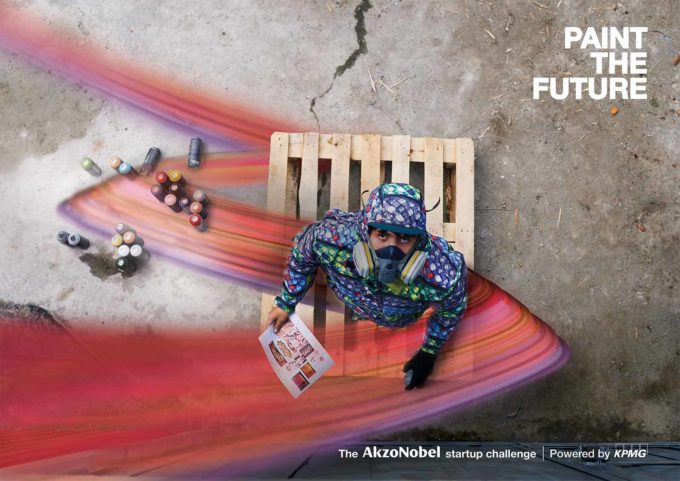
Why future-facing luxury brands must favor excellence over perfection
What does it mean to be excellent, not perfect, in 2024, and why should luxury brands weave the answer into their strategy? ...

by Stéphane J. G. Girod, Jana M. Arden, Barbara Rybka Published 14 February 2024 in Luxury • 8 min read
As the global economy braces for its most sluggish half-decade of growth in 30 years, luxury brands are beginning to feel the strain. Following the surge in sales induced by the pandemic and bolstered by the expansion of China’s affluent population, the pace of luxury sales is anticipated to revert to more moderate levels in 2024 as consumers rein in spending.
Despite recent robust GDP and employment figures in the US, and Europe narrowly averting recession in 2023 (plus better-than-expected quarterly sales at LVMH and Richemont), the outlook for 2024 is clouded by higher borrowing costs and geopolitical tensions, which are expected to constrain output.
Additionally, there are three “rupture points,” or trends that interact, and even reinforce, each other to reshape luxury as we know it. There’s also one “black swan,” or major event that may come as a surprise that luxury managers need to be particularly aware of this and next year. This was all discussed in the first 2024 C-Suite Talk at the IMD Luxury 2050 Forum.
The first rupture point is the change in globalization dynamics. Many luxury brands have significant exposure to the Chinese market, where there is mounting uncertainty over the economic trajectory owing to a declining population, a property market crisis, and high youth unemployment. Adding to that are geopolitical tensions with the West and concerns over a potential decoupling with China. Moreover, with growing income inequality around the world, some may view excessive displays of wealth as insensitive or out of touch.
The second rupture could be the point of no return in the Earth’s ecosystems, where a small change can lead to a significant and irreversible environmental impact. The IPCC warns the world is currently on track for a temperature increase well above 1.5°C, compared with pre-industrial levels. The luxury industry relies on natural resources for its products and experiences – so deforestation, habitat destruction, or depletion of resources can disrupt the supply chain of these materials, leading to scarcity and increased costs for luxury brands.
The third rupture point arrives with generative artificial intelligence (GenAI). Here, customers wield the power to craft content that can surpass the creativity of some luxury brands. Yet the rise of GenAI raises questions about the human role in creations generated by machines. It’s crucial, therefore, to examine the ethical and privacy concerns intertwined with this game-changing technology.

“Creating outstanding luxury services and experiences at scale comes down to mastering the three pillars of digital transformation: people, process, and technology.”- Barbara Rybka, Chief Customer Officer at Commerce Layer
The aforementioned black swan, meanwhile, is the potential re-election of Donald Trump as US President. If that happens, we could see European countries increase military budgets and possibly the conscription of young people. And that could change the economic dynamics in Europe and beyond – with potential implications for luxury brands through more austerity.
In this volatile and uncertain environment, we’ll need courageous leadership to address those rupture points. For luxury, a good starting point would be to fix the basics around the customer journey – for example, the lack of trained talent in physical stores or lack of stock.
For sustainability, we’ll need more credible commitments from brands, such as new business models around circularity and potentially a much greater role for the renting of luxury goods. AI could help us to reduce production and consumption, moving to models where we produce on demand. But this idea that we can continue growing in volume, as has been the case, and meet environmental targets is probably delusional.
Lastly, these breakthrough technologies such as GenAI need to address real customer pain points. NFTs are a little bit gimmicky, but immersive showrooms could take luxury out of the Middle Ages.
When crafting these digital journeys, transformation alongside digitalization will be essential for luxury brands – a point hammered home by Jana Arden, the Global Business Lead for Consumer, Retail, and Manufacturing at Capgemini, at the IMD Luxury 2050 Forum.
Arden said that tailored digital journeys would be crucial for targeting the high-net-worth and ultra-high-net-worth (HNW and UHNW) clientele who dominate luxury sales, despite a rise in less wealthy “affluents,” who outnumbered HNW clientele by 2.5 times in 2023. To capture more of their spending, Arden said that it was essential for luxury brands to pursue exclusivity and maintain a sense of novelty and excitement for their customers.

The interests of this clientele are multifaceted. A personal narrative plays an important role, often achieved through using concierge services. Further, given the growing amount of data required for collection, privacy is more important than ever for this wealthy clientele. Last but not least, she said, is the importance of legacy. “This particular clientele is looking for something continuous,” said Arden, noting that brands are exploring unique investments like collectibles, art, and real estate that stand the test of time.
She further underscored a recent shift in digital adoption and related challenges in providing digital services to the wealthy. “Pre-COVID, there was a reluctance towards digitization, but during COVID there was an inevitable shift towards e-commerce and various omnichannel features,” Arden recalled. “Post-COVID, we’ve seen major investment and explorations in the metaverse, augmented reality, Gen AI, and Web3. But we also know there is quite a struggle that this digitalization wave brings to luxury companies.”
One struggle is that the HNW and UHNW customer segments are very small and fragmented, which drives operational complexity. Moreover, the wholesale transactions that are prevalent in this sector are hindering data collection. “The internet and digitalization have never been famous for making things scarce,” Arden added. “We see digital, multi-brand platforms experiencing a decline, or at best, a strategic retreat.” How to overcome those hurdles?

First and foremost, Arden said that if brands want to stand out in the digital era to HNW and UHNW clients, they need to nurture the human touch within luxury experiences, while aligning strategies with the alchemy of converting emotion into sales. “Luxury is selling promises, dreams, and emotions. If digital cannot deliver on this promise, it is failing,” she added.
Second, brands need to re-evaluate client engagement strategies and attract a more diverse customer base, moving beyond the traditional focus on the US and China. “This is a time to look for new segments,” Arden said. “We see a lot of discussions about the rise of India and Africa.”
Brands also need to align digital experiences with the preferences of generations with different levels of tech-savvy, she said. “One recipe fitting all will not work – and that’s adding another layer of complexity.”
Third, she stressed the importance of digitizing the operational value chain. “This means addressing the complexities arising from expanding omni-channel. It’s also vital to improve the efficiency of collecting, structuring, and harnessing data while overcoming limitations posed by new technological tools.”
Lastly, she concluded that digitalization and transformation are equally important to service HNW and UHNW clients.

“Luxury is selling promises, dreams, and emotions. If digital cannot deliver on this promise, it is failing.”- Jana Arden, the Global Business Lead for Consumer, Retail, and Manufacturing at Capgemini
Arden finally provided five concrete tactics to serve this goal.
“Elevating relationships with wealthy and ultra-wealthy clientele requires a balanced and tailored approach,” Arden stressed.
Building on the discussion was Barbara Rybka, Chief Customer Officer at Commerce Layer, a headless commerce platform that powers transactions and orders for enterprise brands. She said that creating outstanding luxury services and experiences at scale comes down to mastering the three pillars of digital transformation: people, process, and technology.
On the people side, the core of it is building a customer-centric culture. “Luxury is inherently product-centric; it’s about craftsmanship, design, and scarce and luxurious materials,” Rybka said. Brands need to shift that mindset to include customers at all levels of the pyramid, which means breaking down channel barriers and capturing data on customers to deliver a single, unified brand experience. “The key is to see them as customers of the brand – not one store, channel, or region,” said Rybka. “Ultimately, the goal should be to know your customers and service them across their shopping journeys – wherever they begin or end – as one brand.”
On the technology side, she noted the industry had moved from single-channel commerce (1980-2000) to multi-channel and product-driven commerce (2000-2020) to today’s experience-driven and omnichannel commerce. “With an API-first architecture and specialized business services, you can compose solutions that drive the desired customer experiences,” she said, while noting the importance of treating technology as a competitive advantage rather than a cost center. She added that brands should “buy the foundation but build the differentiators,” while bringing skills in-house that will create business value.
On processes, this is all about removing barriers to speed. “Define your minimum viable product, test it, and iterate,” Rybka said. “The faster you are to market, the faster you are to learn.” Then focus on where automation can free up resources to focus on the value-add.
She added that AI is “the next disruptor,” so build use cases for short-term benefits and longer-term transformation. Lastly, review policies and the barriers to creating a “one-brand” experience. “Harmonize policies around the world so it’s consistent at every customer interaction and engagement point.” And when experimenting with emerging technologies, be outcome oriented. “Understand what you’re trying to learn and how it will bring business value.”
This C-Suite talk was organized by the IMD Luxury Forum 2050, a community that joins forces to share experiences, learning, and views of the future of luxury in a trusted environment and addresses the challenges and transformations of luxury brands.
You can learn more about the Forum here.

Professor of Strategy and Organizational Innovation
Stéphane J.G. Girod is Professor of Strategy and Organizational Innovation at IMD. His research, teaching and consulting interests center around agility at the strategy, organizational and leadership levels in response to disruption. At IMD, he is also Program Director of Reinventing Luxury Lab and Program Co-Director of Leading Digital Execution.

Head of the Luxury Sector at KPMG
Jana M. Arden is the Head of the Luxury Sector at KPMG. She focuses on organic and inorganic growth strategies and enterprise performance in the luxury sector. Before joining consulting, Jana worked in premium retail industry, holding various roles across Asia and Europe. Jana is a co-founder and board member of the IMD Luxury 2050 Forum. She is an active contributor to a range of business magazines and academic periodicals. She holds an MBA from IMD Business School and a Master’s in Liberal Arts in Industrial-Organizational Psychology from Harvard University.

Chief Customer Officer at Commerce Layer
Barbara Rybka is the Chief Customer Officer at Commerce Layer, Inc., bringing experience from previous roles at Gucci, Etsy, Isobar and American Express. As a customer-centric and results driven global executive, she has spent her career shaping digital strategy, leading brand and marketing initiatives, and driving transformation within corporations at the national and global levels. Barbara holds an MBA at IMD.

27 March 2024 • by Stéphane J. G. Girod, Roberto Eggs, Rui Meng in Luxury
What does it mean to be excellent, not perfect, in 2024, and why should luxury brands weave the answer into their strategy? ...

23 December 2023 • by Stéphane J. G. Girod in Luxury
Luxury brands must ensure they are agile and flexible enough to respond to the uncertainties they face....

14 December 2023 • by Stéphane J. G. Girod, Vanessa Signorini in Luxury
Luxury firms traditionally operating in hospitality are crossing arms with luxury brands entering the sector, or so it seems. Both types of players are gaining traction and growing their respective businesses through...

12 December 2023 • by Howard H. Yu in Luxury
As the latest IMD Future Readiness Indicator is published, we take a close look at the pioneers and innovators setting the stage for 2024. ...
 Audio available
Audio availableExplore first person business intelligence from top minds curated for a global executive audience